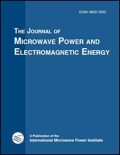
JOURNAL OF MICROWAVE POWER AND ELECTROMAGNETIC ENERGY
Scope & Guideline
Illuminating Innovations in Electromagnetic Research
Introduction
Aims and Scopes
- Microwave Materials Science:
Research on the dielectric properties and electromagnetic characteristics of various materials, including natural and synthetic substances, to optimize their performance in microwave applications. - Microwave Processing Technologies:
Studies exploring the use of microwave energy in processing techniques such as drying, heating, and synthesis of materials, aimed at enhancing efficiency and quality. - Biomedical Applications of Microwaves:
Investigating the use of microwave technology in medical applications, including cancer treatment, imaging, and diagnostic methods, showcasing its potential in improving healthcare outcomes. - Modeling and Simulation:
Development of computational models and simulations to predict microwave interactions with materials and optimize microwave systems for various applications. - Electromagnetic Energy Applications:
Exploration of practical applications of electromagnetic energy, including wireless power transfer and communication technologies, focusing on innovative uses and improvements.
Trending and Emerging
- Sustainability in Microwave Applications:
Increasing emphasis on environmentally friendly and sustainable practices in microwave processes, including green synthesis methods and energy-efficient technologies. - Advanced Biomedical Microwave Techniques:
Emerging research on innovative biomedical applications, such as enhanced cancer treatment methods and real-time monitoring using microwaves, reflects the growing intersection of healthcare and microwave technology. - Machine Learning and AI Integration:
A notable trend towards incorporating machine learning and artificial intelligence in analyzing microwave data and optimizing processes, showcasing the journal's adaptation to modern technological advancements. - Microwave-Assisted Nanotechnology:
Growing focus on the use of microwaves in the synthesis and processing of nanomaterials, indicating a significant interest in the intersection of nanotechnology and microwave energy. - Wireless Power Transfer Innovations:
Emerging research on improving wireless power transfer systems using microwaves, reflecting advancements in communication and energy transfer technologies.
Declining or Waning
- Traditional Food Processing Techniques:
Research on conventional food processing methods using microwaves has decreased, as newer and more efficient methods are being explored, such as advanced drying and extraction technologies. - Basic Theoretical Studies without Practical Applications:
There is a noticeable reduction in purely theoretical studies that lack direct applications or experimental validation, as the journal shifts towards research with tangible outcomes and real-world relevance. - General Electromagnetic Theory:
Papers focusing on broad electromagnetic theory without specific applications in microwaves are less frequent, indicating a trend towards more specialized and applied research. - Basic Dielectric Characterization:
While dielectric properties remain a key focus, basic characterizations lacking advanced applications or innovative methodologies have seen a decline, as the field moves towards more complex and applied studies.
Similar Journals

Progress in Electromagnetics Research-PIER
Pioneering Discoveries in Radiation and EngineeringProgress in Electromagnetics Research-PIER, published by EMW PUBLISHING, is an esteemed academic journal that stands at the forefront of the fields of Condensed Matter Physics, Electrical and Electronic Engineering, and Radiation. With an impressive impact factor reflected in its Q1 quartile rankings across these disciplines, PIER serves as a critical platform for disseminating high-quality research findings and advancements from 2000 onwards, with the latest contributions expected through 2024. The journal's commitment to excellence is evident as it holds prominent positions in Scopus rankings, including a remarkable 95th percentile in the field of Radiation. Researchers, professionals, and students will find PIER invaluable for accessing cutting-edge topics and methodologies that push the boundaries of electromagnetics research. For facile access, the journal is published in both ISSN (1070-4698) and E-ISSN (1559-8985) formats, ensuring that vital knowledge is readily available to its audience.

International Journal of Microwave and Wireless Technologies
Shaping the Future of Microwave Engineering and Applications.International Journal of Microwave and Wireless Technologies is a leading academic journal published by Cambridge University Press, dedicated to the advancement of knowledge in the fields of microwave and wireless technologies. Since its inception in 2009, this journal has established itself as a crucial platform for researchers, professionals, and students involved in Electrical and Electronic Engineering, currently positioned in the Q3 quartile as per the 2023 category rankings. With an ISSN of 1759-0787 and an E-ISSN of 1759-0795, it facilitates the dissemination of high-quality research articles that address emerging trends and challenges in microwave and wireless communications. The journal is committed to fostering innovation and collaboration within the global scientific community, aiming to publish significant contributions that appeal to both academic and industrial perspectives. Its Scopus ranking of 382 out of 797 highlights its relevance and impact in the engineering domain. While currently not an open-access journal, it provides various access options for its readership, ensuring that cutting-edge research remains accessible to all.

IEEE Open Journal of Antennas and Propagation
Advancing the frontiers of antenna research.IEEE Open Journal of Antennas and Propagation, published by the renowned IEEE-INST ELECTRICAL ELECTRONICS ENGINEERS INC, stands at the forefront of research in the field of antennas and propagation since its inception in 2020. With an impressive Q1 ranking in Electrical and Electronic Engineering and a current Scopus percentile ranking placing it in the top 25% of its category, this journal not only fosters innovative studies but also serves as a critical resource for researchers, professionals, and students alike. As an Open Access journal, it amplifies the accessibility of cutting-edge research and encourages the widespread dissemination of knowledge. This journal's scope encompasses a broad array of topics within antenna design and propagation theory, making it an essential platform for advancing the academic and practical applications in these domains. The dedicated focus on converged technologies from 2020 to 2024 propels the journal into the future of electromagnetic research and fosters collaborative discourse among experts in the field.
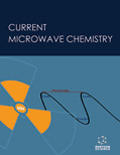
Current Microwave Chemistry
Exploring the Frontiers of Microwave-Assisted ChemistryCurrent Microwave Chemistry is a pioneering academic journal dedicated to the dynamic and rapidly evolving field of microwave-assisted chemistry. Published by Bentham Science Publishers Ltd, this journal aims to disseminate high-quality research that explores innovative methodologies, novel applications, and the fundamental principles underlying microwave technology in chemical processes. Offering a platform for researchers, professionals, and students, Current Microwave Chemistry plays a crucial role in enhancing the understanding and application of microwave chemistry across disciplines such as synthetic chemistry, materials science, and pharmaceutical research. By facilitating open access to groundbreaking studies, this journal encourages collaboration and knowledge exchange, positioning itself as an essential resource for those looking to push the boundaries of what is achievable in chemical science.
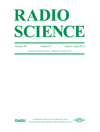
RADIO SCIENCE
Pioneering Research in Electromagnetic SciencesRADIO SCIENCE, published by the American Geophysical Union, is a premier journal dedicated to advancing the field of electromagnetic research across various domains, including Earth and planetary sciences, electrical engineering, and condensed matter physics. With an impressive convergence of scholarly contributions from 1966 to 2024, the journal is recognized for its impactful research, reflected in its Scopus rankings and its Q2 quartile status across multiple relevant categories. It ranks 71st in general Earth and planetary sciences and 396th in electrical and electronic engineering, highlighting its broad reach and significance. Although not an Open Access journal, RADIO SCIENCE continues to engage a dedicated readership of researchers, professionals, and students eager to contribute to and benefit from cutting-edge discoveries in the electromagnetic sciences. The journal serves as a vital resource for fostering dialogue and collaboration among academics and practitioners alike, promoting excellence in research and innovation.
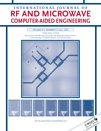
INTERNATIONAL JOURNAL OF RF AND MICROWAVE COMPUTER-AIDED ENGINEERING
Innovating Computer-Aided Design for Tomorrow's TechnologiesInternational Journal of RF and Microwave Computer-Aided Engineering, published by Wiley, is a leading peer-reviewed journal dedicated to advancing research in the realms of radio frequency, microwave engineering, and computer-aided design. With an ISSN of 1096-4290 and an E-ISSN of 1099-047X, this journal plays a pivotal role in the dissemination of innovative methodologies and state-of-the-art developments within these dynamic fields. Recognized within the Q3 category across three engineering and computer science domains as of 2023, it garners attention for its substantial contributions, ranking 40th among 106 in Computer Graphics and Computer-Aided Design and 327th among 797 in Electrical and Electronic Engineering according to Scopus metrics. Emphasizing its commitment to knowledge sharing, the journal provides a range of access options, including Open Access, to ensure the research is readily available to a global audience. Covering years from 1996 to 2024, the International Journal of RF and Microwave Computer-Aided Engineering continues to be an indispensable resource for researchers, professionals, and students in pursuit of excellence in engineering and applied sciences.

Radiophysics and Quantum Electronics
Bridging Theory and Application in RadiophysicsRadiophysics and Quantum Electronics is a leading scholarly journal published by SPRINGER, dedicated to advancing knowledge in the fields of radiophysics and quantum electronics. With a rich publication history dating back to 1967 and covering anticipated insights up to 2024, the journal serves as a crucial resource for researchers engaged in the exploration of areas such as Astronomy and Astrophysics, Electrical and Electronic Engineering, and Nuclear and High Energy Physics. Although it is classified in lower quartiles in several categories, its ongoing commitment to quality research and critical advancements adds invaluable knowledge to the scientific community. The journal does not currently offer open access options, allowing for traditional publication standards that uphold rigor and academic integrity. Researchers, professionals, and students alike can benefit from the comprehensive articles and studies published within its pages, making Radiophysics and Quantum Electronics an essential addition to any academic library focused on the nuances of modern physics and engineering.
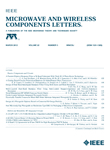
IEEE MICROWAVE AND WIRELESS COMPONENTS LETTERS
Transforming Research into Impactful Solutions in Microwave Science.IEEE Microwave and Wireless Components Letters, published by the esteemed IEEE - Institute of Electrical and Electronics Engineers, stands as a crucial platform for disseminating innovative research in the realms of microwave and wireless technology. With an impact factor that emphasizes its significance in the academic community, the journal has achieved notable rankings, including Q1 in Condensed Matter Physics and Q2 in Electrical and Electronic Engineering for 2023. Covering an extensive range of topics pertinent to practitioners and theorists alike, it aims to provide rapid publication of short, concise letters reporting on cutting-edge research findings that drive the field forward. Although coverage in Scopus has been discontinued, the journal remains an influential resource, reflecting its long-standing dedication to advancing electrical engineering and applied physics, thus making it an essential read for anyone invested in these dynamic disciplines.
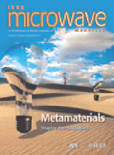
IEEE MICROWAVE MAGAZINE
Exploring the cutting-edge of microwave applications and theory.IEEE Microwave Magazine is a prestigious publication dedicated to advancing the field of microwave engineering, including theoretical developments and practical applications across various industries. Published by the IEEE-Institution of Electrical and Electronics Engineers, the magazine provides cutting-edge insights and comprehensive coverage of topics such as condensed matter physics, electrical and electronic engineering, and radiation, earning a notable Q2 ranking across these domains based on 2023 metrics. While it maintains traditional subscription access, the magazine's relevance is underscored by its substantial impact factor, making it a crucial resource for researchers, professionals, and students alike. With a commitment to fostering innovation and interdisciplinary collaboration, IEEE Microwave Magazine plays an essential role in broadcasting critical advancements and applications within the ever-evolving microwave technology landscape. This dynamic publication is designed to keep its audience informed and engaged, serving as a vital platform for the exchange of knowledge and ideas in this specialized field.

MICROWAVE JOURNAL
Elevating Standards in Microwave ResearchMicrowave Journal, published by Horizon House Publications Inc, is a well-established platform in the field of Electrical and Electronic Engineering, specifically focusing on the advancements and applications of microwave technology. Since its inception in 1969, the journal has consistently delivered high-quality research, making it an invaluable resource for professionals, researchers, and students alike. Despite its Q4 ranking in Scopus for 2023, the journal plays a crucial role in disseminating knowledge and fostering innovation within its niche, showcasing developments across various areas including microwave systems, components, and applications. Although it does not offer Open Access, the journal’s comprehensive insights and peer-reviewed articles are essential for anyone looking to deepen their understanding of microwave engineering. By maintaining a rigorous editorial standard, Microwave Journal continues to shape the discussion and evolution of microwave technology.